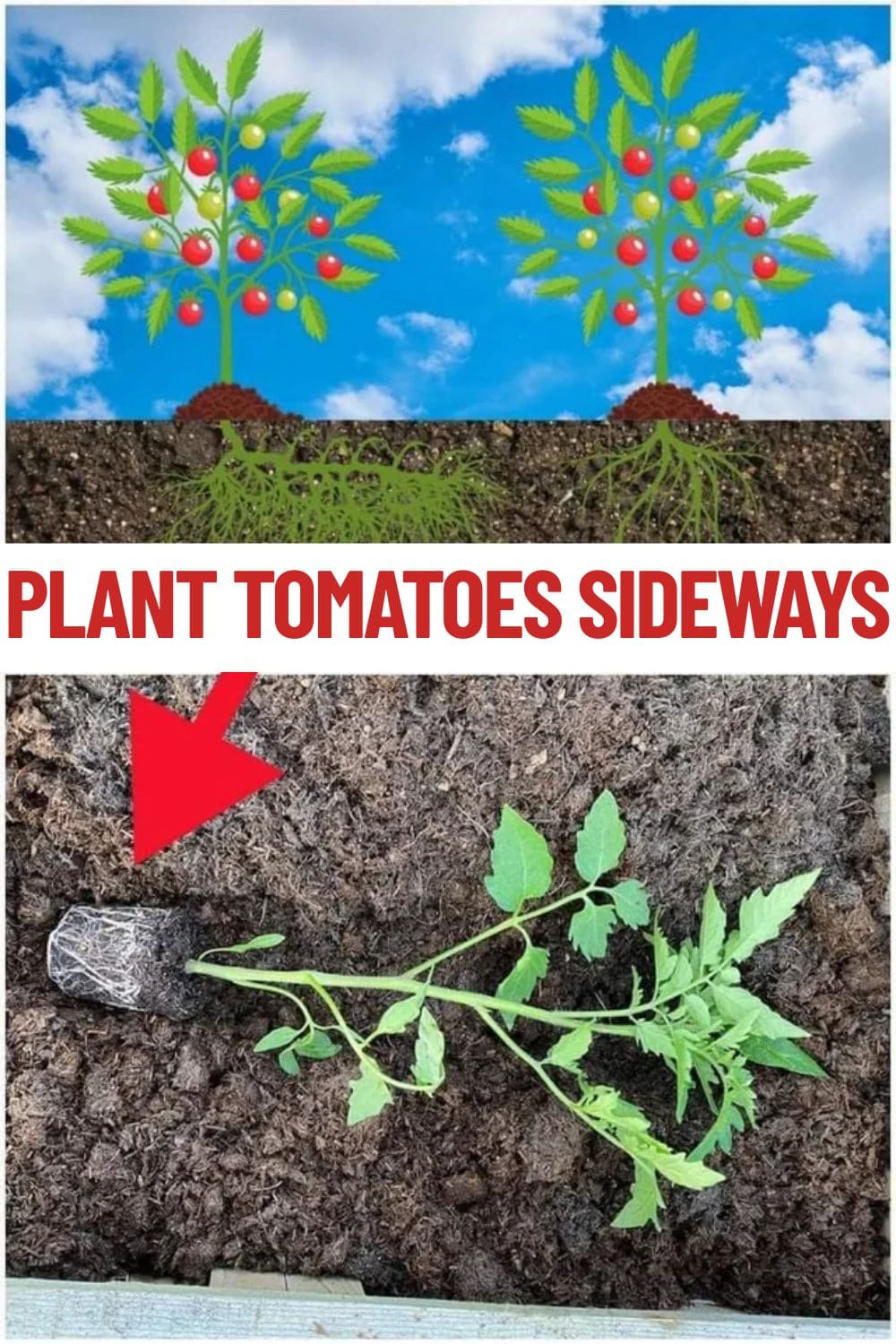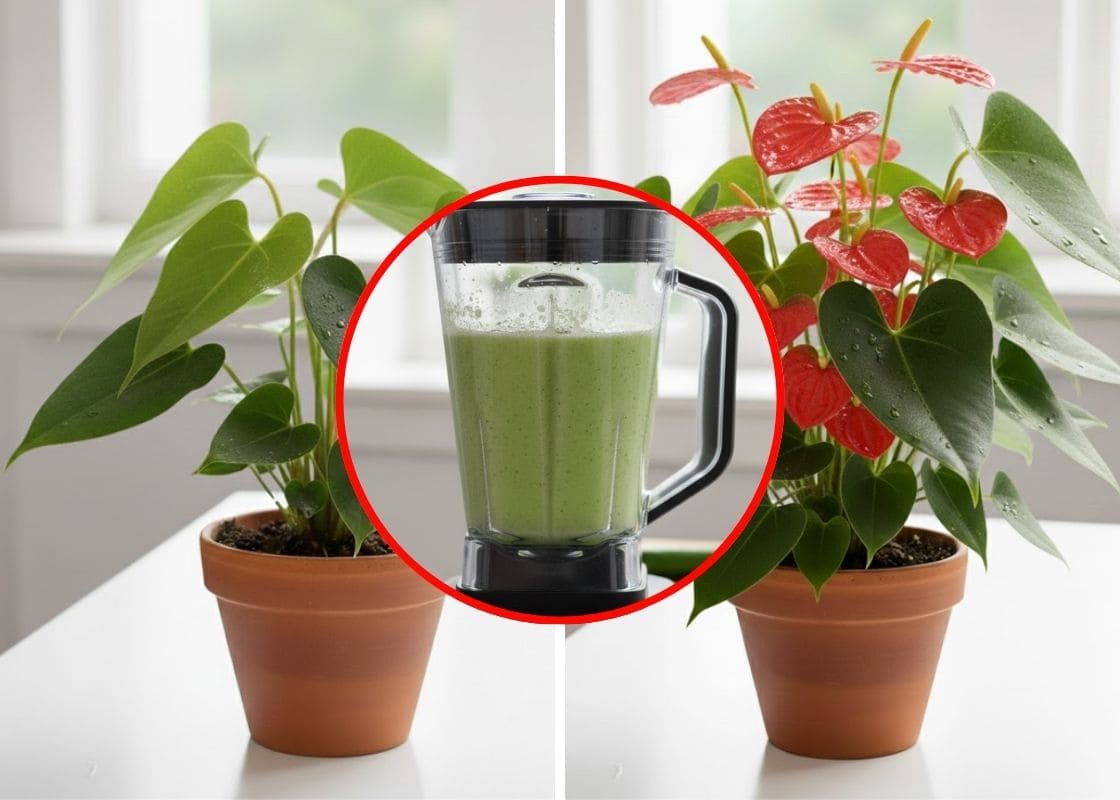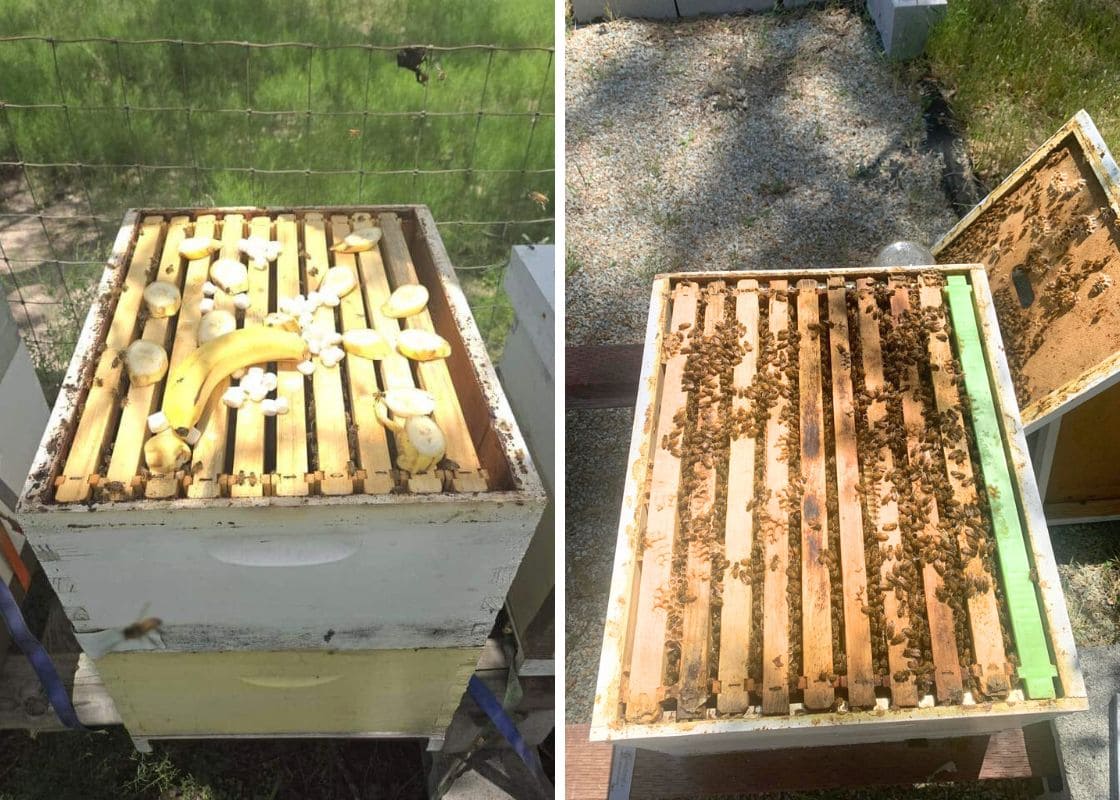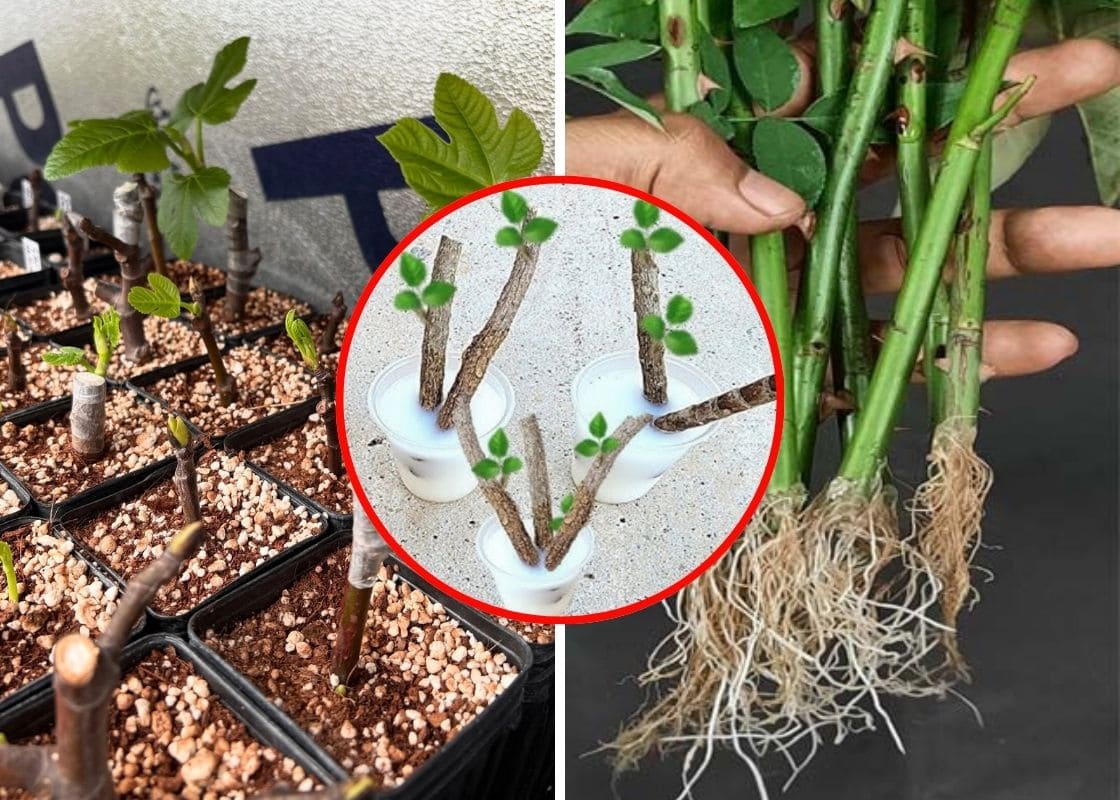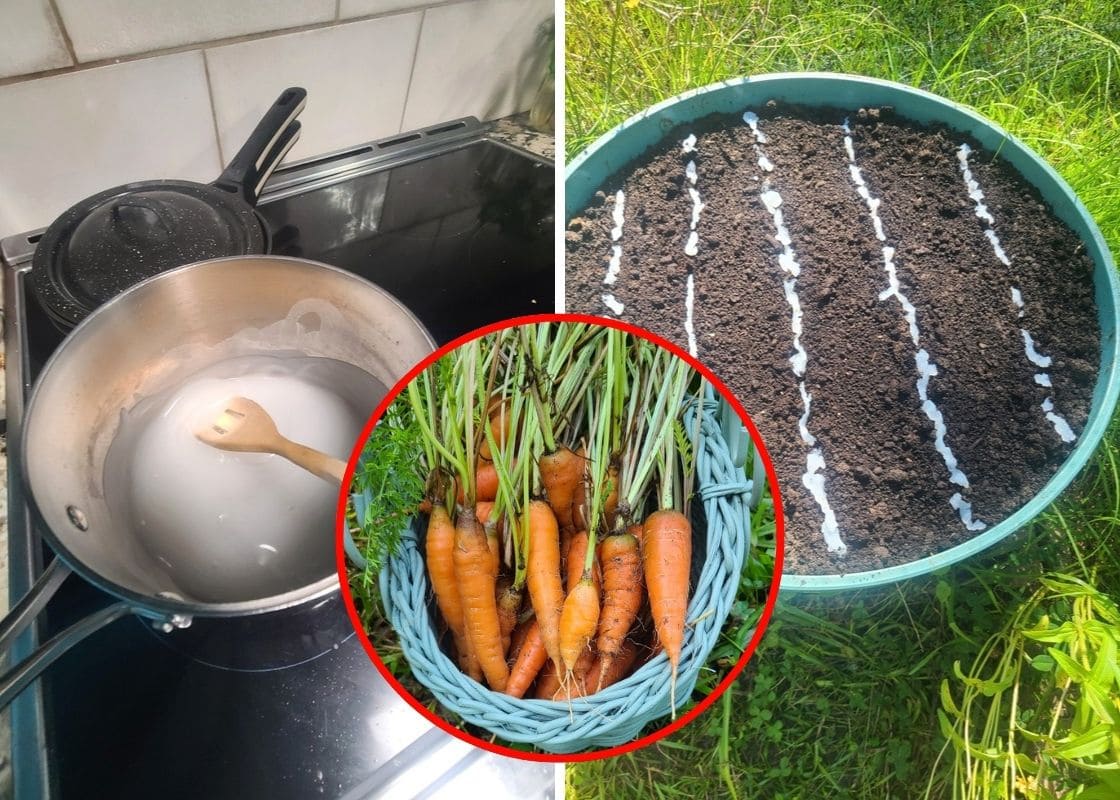If you’ve been growing tomatoes for a while, you probably know they can be a little fussy when it comes to getting established.
Leggy seedlings, weak stems, and poor root systems can all lead to disappointing harvests. But here’s a simple, often overlooked trick that can make a huge difference: plant your tomatoes sideways.
This unconventional method might seem odd at first, but it works with the tomato plant’s natural ability to grow roots from its stem.
By planting your seedlings on their side in a shallow trench instead of upright in a deep hole, you’re encouraging the plant to develop a much stronger root system.
Why Planting Tomatoes Sideways Works
Tomatoes are unique because their stems can sprout roots wherever they touch the soil.
When you plant a tall or leggy tomato seedling upright, it often struggles to support its weight, and the upper part of the plant ends up weak and floppy.
But if you lay the stem horizontally in the soil, every point along the buried stem has the potential to develop roots.
More roots mean more access to water and nutrients, which translates into faster growth, stronger stems, and ultimately, more tomatoes.
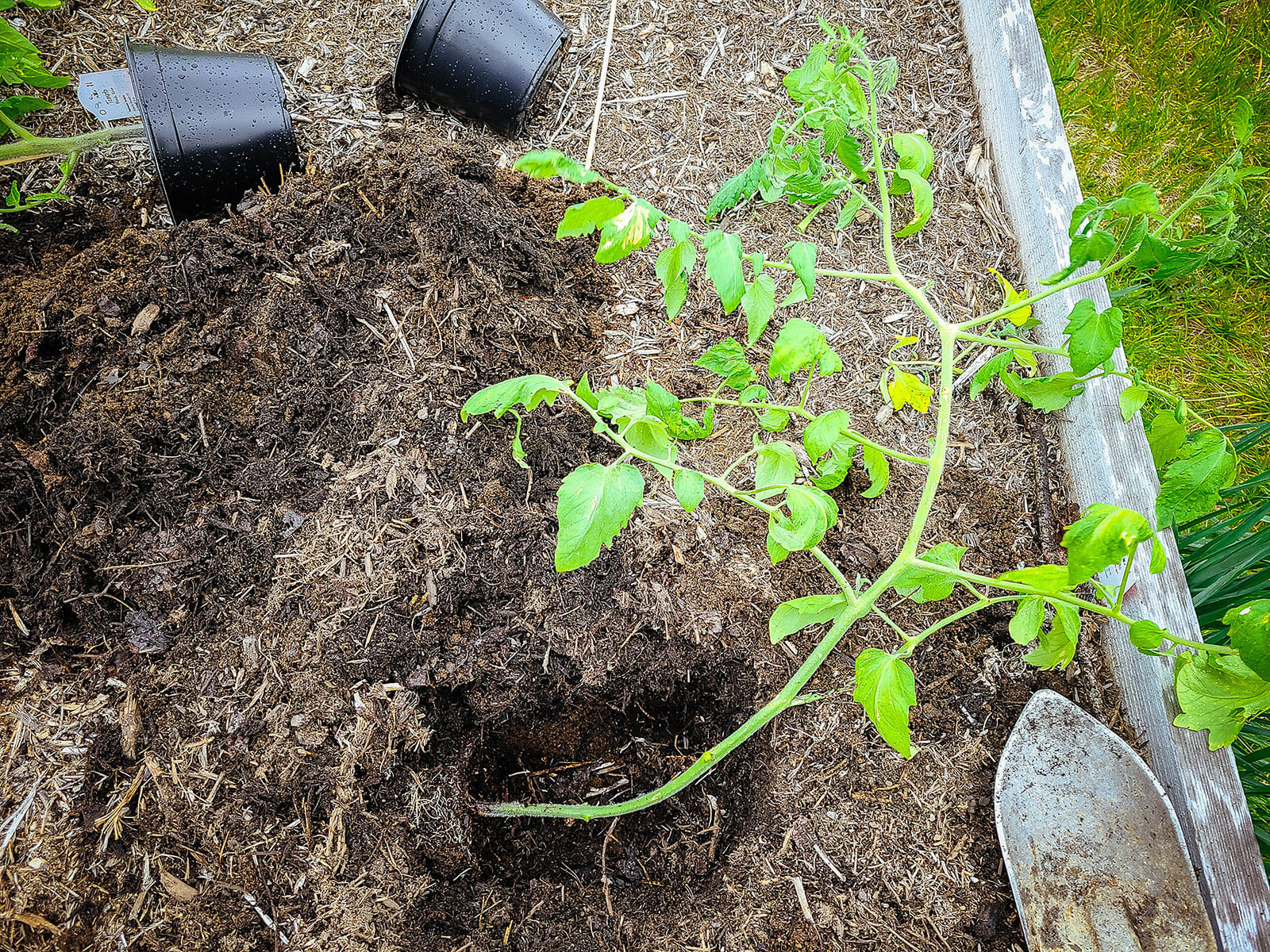
This method is especially helpful if your seedlings have grown tall indoors and become leggy, a common issue when they don’t get enough sunlight early on.
Sideways planting also improves stability. Since the plant is anchored along a longer section of its stem, it stands up better to wind, heavy rain, and even drought.
That added support is especially useful in areas with unpredictable weather or in raised beds where soil can dry out quickly.
How to Plant Tomatoes Sideways the Right Way
Start by choosing a healthy tomato seedling. If it’s already a bit too tall for its container, don’t worry, that’s exactly the kind of plant that benefits from this technique.
Before planting, remove the lower leaves from the bottom portion of the stem. These would be buried anyway, and removing them helps prevent rotting underground.
Don’t be afraid to trim off several sets of leaves if the plant is particularly leggy; the upper leaves are all you need for now.
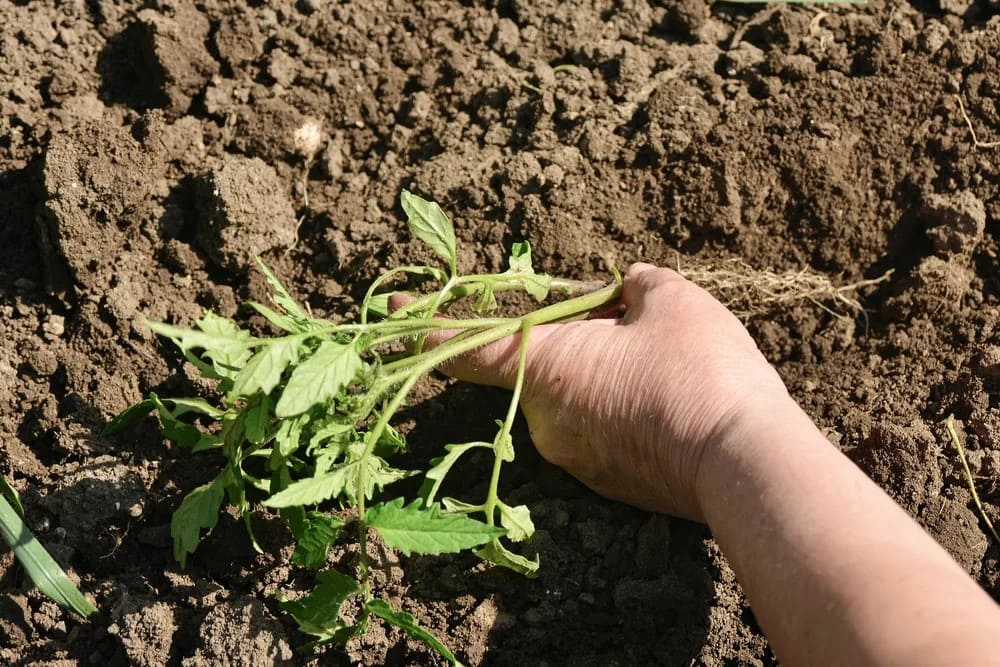
Next, dig a shallow trench rather than a deep hole. This trench should be long enough to accommodate the stem of the plant lying on its side, with just the leafy top left sticking out above ground.
The root ball should go at one end of the trench, while the rest of the stem gently curves upward toward the surface.
You don’t need to bend the plant sharply, just a gentle arch will do. Tomatoes are flexible and will naturally start growing upright again after a few days.

Once the plant is in position, carefully cover the entire stem with soil, leaving only the top of the plant exposed.
Press the soil gently to remove any air pockets, and water thoroughly to help the roots settle in. You might feel a little unsure burying part of the stem, but this is exactly what you want.
As your plant begins to grow, it will straighten itself out and continue to reach for the sun.
At that point, you can add a tomato cage or stake to help support its upward growth. This method doesn’t replace the need for support, it just gives your plant a much better start.
Setting Your Tomatoes Up for Success
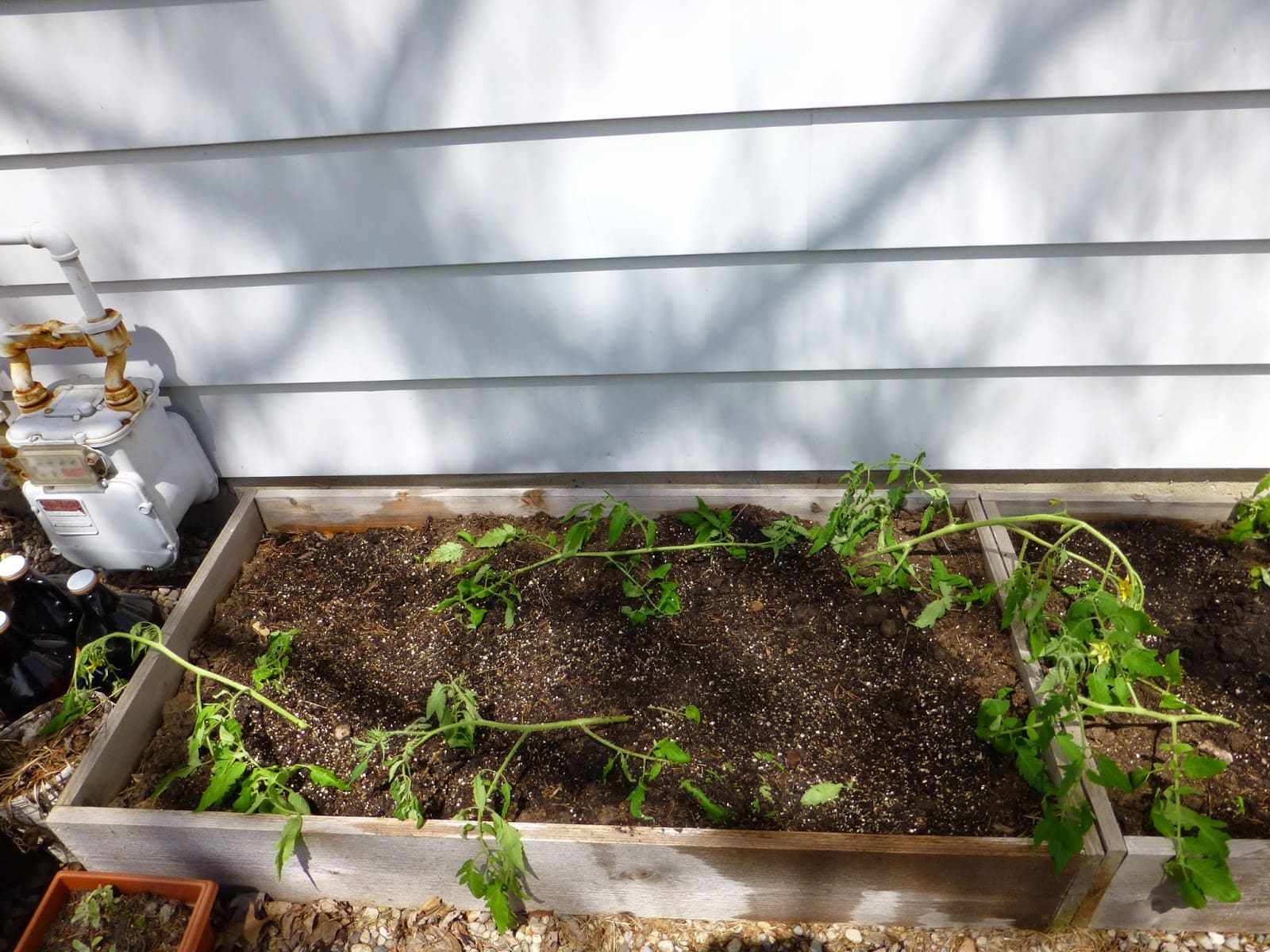
Even with the sideways planting method, your tomatoes will still appreciate a little extra care.
Choose a sunny location with well-draining soil, and consider adding compost or aged manure to give your plants a nutrient boost.
Tomatoes are heavy feeders, and starting them off with rich soil gives them the best chance at thriving.
Also, water deeply but not too frequently, and try to water at the base of the plant rather than overhead to reduce the risk of disease.
Mulching around the base can help retain moisture and keep weeds at bay, both of which are important for healthy root development.
Spacing is also important. Even though it’s tempting to pack in a bunch of plants, tomatoes need room to spread out.
Giving each plant about two to three feet of space allows for better airflow and reduces the chance of disease.
The Payoff: A Healthier, More Productive Garden
Sideways planting might sound like a small change, but it can lead to big results.
By encouraging stronger root systems and correcting legginess right from the start, this method sets your tomato plants up for a productive, stress-free growing season.
You’ll see sturdier stems, fuller foliage, and, best of all, more ripe tomatoes filling your baskets.
